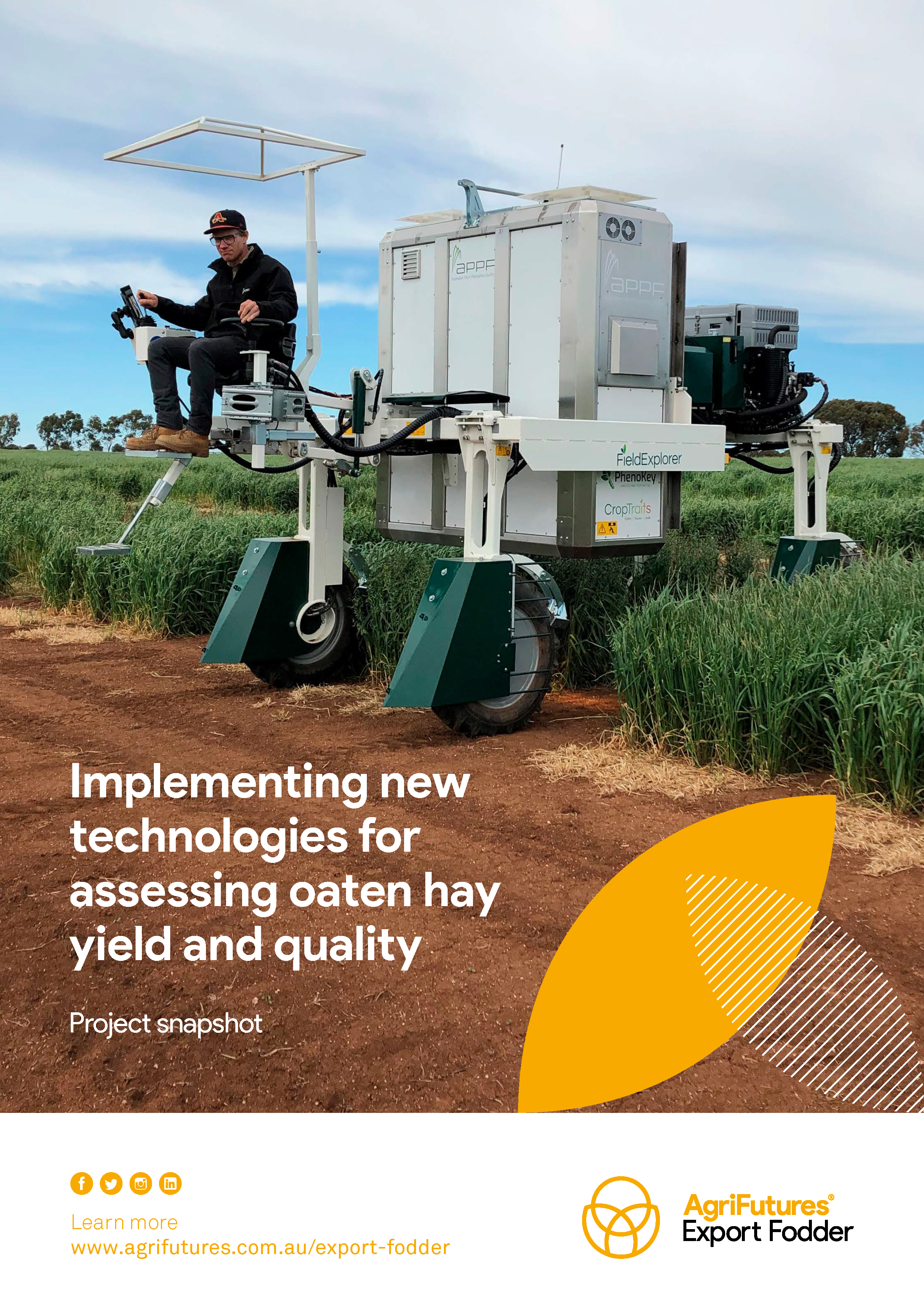In oaten hay breeding and agronomy research, there are limitations for assessing biomass and quality traits. The process is labour intensive and time consuming, manual hay cuts need to be carried out at consistent growth stages, and samples need to be processed in a laboratory and analysed using spectrophotometry or biochemical assays. There is a significant opportunity to utilise new imaging technology, such as LiDAR and hyperspectral sensors, to more efficiently and accurately extrapolate quality data important to breeders and processors in situ.
This project was a preliminary investigation into the feasibility of utilising imaging technology to predict a range of oaten hay quality traits relevant to export and domestic markets. These included measures of biomass, fibre and sugar content, digestibility, and colour. Generally low correlations were observed between the traits of interest and both LiDAR and hyperspectral measurements. Learnings from the project highlight the key challenges and can guide future approaches to improve correlations and the application of this technology by researchers, growers and processors.
Continued investment in the use and adoption of this technology should result in a net increase in genetic gain for key quality attributes, improved varieties for growers and greater understanding of the impact of agronomic management on hay quality.





